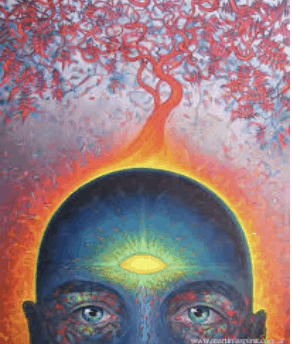Ever gone to a class and not been able to understand most of what was being said? Between the use of Sanskrit, flowery cues and being asked to relax while also trying hard, the yoga classroom can be a very confusing place. Through this blog I plan on decoding yoga to make it more accessible and easy to understand. So below are four popular terms you’ll hear in class and what they actually mean.
Crown of the head:
Literally the top of the head. Not where you are looking, but rather where the top of your head is facing. It’s a subtle, but important difference. Usually teachers say it to describe the act of elongating the spine. Teachers will cue this by saying something like, “reach the crown of the head upward” so how do you do it? By keeping your eyes looking straight ahead, imagine there is a magnet on top of your head and the direction the teacher is describing is the where the other magnet is. If you did this in a seated or standing position you’d be reaching the top of your head up to the ceiling and creating more space in the neck. What the teacher is not asking you do is look in that direction and lush craning your neck.
The Third eye:
As a standard in any class you’ll be asked to look at, brings thumbs to or focus in on your third eye. In my quest in decoding yoga I couldn’t leave this one out. So where is this mysterious eye and why do yogis talk about it so much? In our quest to decode this term we need to explain both it in both the physical and metaphorical sense. Metaphorically the third eye is the location of the Anja chakra. Physically this is just between the eyebrows. The Anja chakra is our gateway into our inner guru. Allowing us to see what our eyes cannot and converse with the divine. Now, before you write this off as nonsense, it’s worth noting the Buddhist, Hindus and ancient Egyptians all described a version of this. You might also be interested to hear that our eyes only pick less than 1% of the light spectrum.That means there is an entire world of things happening right in front of us that we cannot see. The pineal gland is often also referred to as the third eye, originally simply because of it’s shape and location. Just like the nadis converge on a single chakra so our physical senses meet at the pineal gland. Rene Descartes went so far to believe that it was the seat of the soul. Although that is up for debate, it is the area responsible for our circadian rhythms.

Dristhi:
An article decoding yoga wouldn’t be complete with discussing the Drishti point. Drishti literally means “to gaze”, but as with so much in yoga, it goes deeper than that. When we refer to where the Drishti is we are simply describing where or what you should be looking at in a pose. The human head is heavy and where you look your head follows. Therefore by setting your gaze to the correct direction you can help the pose be more balanced and your neck less strained. The Drishti helps bring your attention to a single point and keep the mind form being distracted. The Dristhi acts like a bandha (Lock) or Mudra so that our energy stays within our body instead of flowing outward. Let me describe these three uses of the Drishti in a practical example. In Warrior II we bring the Drishti to the ring finger of the lead hand. Physically this makes sure we are looking forward and head is neutral and balanced over the hips. It also means you are now looking at your finger and nothing else. Not the time and certainly not the man bun of the guy in front of you. Finally, energetically your Prana can now flow through your body and back in through your eyes. Keeping your energy internal and not bleeding out into the external world. Outside of asana practice the Drishti works as a metaphor, illustrating how where we set our focus is where we are bound to go. For a deeper dive into the history of the third eye check out this article from Gaia: click here
Ujjiya Breath:
A big part of decoding yoga is just understanding the words. Ujia breath is translates simply as victorious breath. At first it can be very difficult to get the hang of, but stick with it and it can aid your practice a ton. So what is it? It’s simply the constricting of the exhale at the back of the throat. This action causes the breath to become audible so it’s easier to focus on. It also helps to heat the body up form the inside out which in turn aides your ability to stretch. To do it start by breathing in through the nose and out through the mouth while making a “ha” sound. Like your’e fogging up a mirror. Now repeat, but close the mouth. Try it for a few rounds and then try combine some movement with it.
